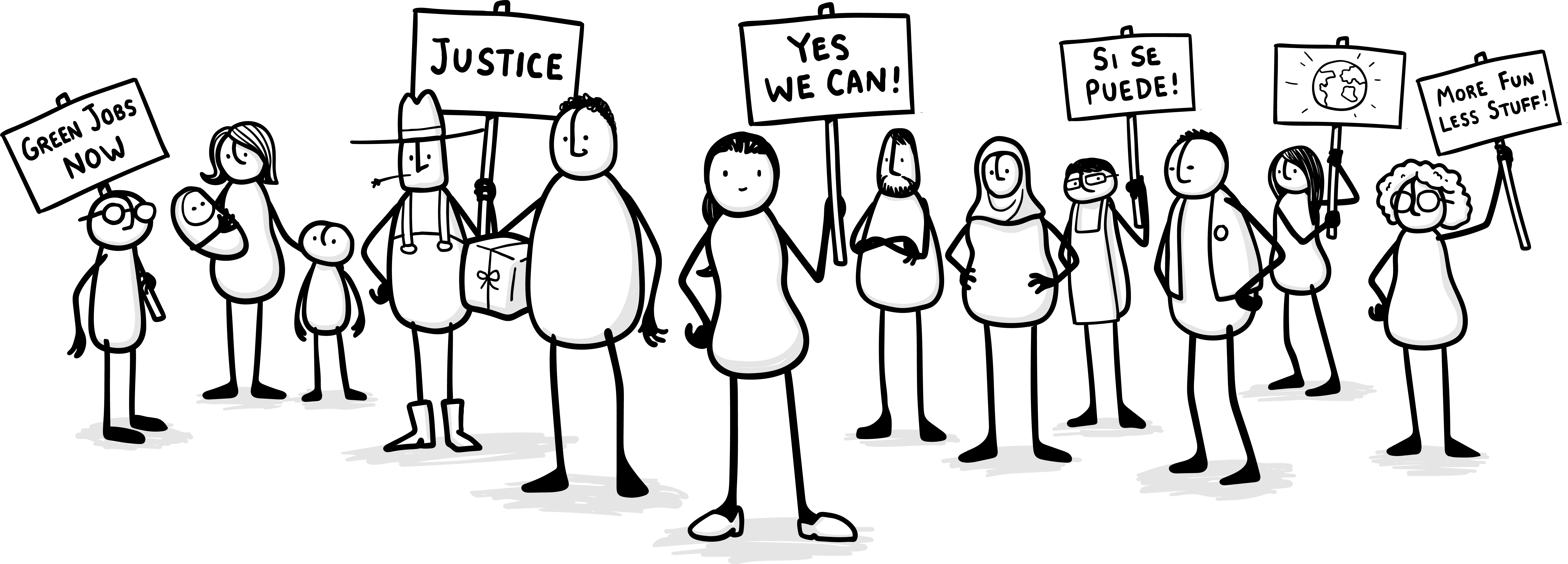We did it!
Last week, the California State Water Board approved a Cease & Desist Order that will stop bottling giant and Nestle-successor BlueTriton from removing tens of millions of gallons of water annually from southern California’s San Bernardino National Forest.
For the Story of Stuff Community and our friends and allies around the world, it’s a huge, long-awaited victory.
This was no ordinary campaign: waged over the course of eight years and led by a remarkable coalition of local, regional and national groups and individuals, it transcended the fairly mundane facts of the case to become something bigger – a metaphorical fight about who controls our water.

From the start the campaign was able to generate a remarkable level of public interest around the world, which we in turn leveraged to pressure decision makers at the Water Board, Forest Service and elsewhere. This was not merely a regional water bottler behaving badly; this was global water privatizer Nestlé, dewatering a once vibrant ecosystem on public lands, just as Californians were doing their part to conserve our shared water resources.
The optics of the company’s long-expired, $524 annual permit to take tens of millions of gallons annually were bad enough – leading to an incredible series of award-winning articles by Desert Sun (now Los Angeles Times) reporter Ian James – but Nestlé also had a way of adding to its troubles by making really hare-brained statements, such one by their American CEO early in the campaign that they would ‘take more water if they could,’ just as Californians were reducing their residential water consumption by 40%.
While the campaign utilized legal and bureaucratic processes – typically the terrain on which big, deep-pocketed companies like Nestlé like to fight – we never lost sight of the fact that this was fundamentally a political struggle, one in which public opinion would prove critical.
When we sued the Forest Service in federal court, we rallied with supporters in front of the Courthouse in Riverside, displaying a banner with the signatures of some of the 280,000 people who’d signed a petition to end the removal of water. When the Forest Service settled that suit and accepted a new permit application from Nestlé, supporters turned up en masse to comment in person. And when the Water Board agreed to hear Nestlé / BlueTriton’s appeal of its Cease & Desist Order, we facilitated our local partners’ participation as intervenors, enabling them to submit hundreds of pieces of evidence and call and cross-examine witnesses. Imagine grandfatherly retired Forest Service biologist Steve Loe, Zooming in from his unfinished basement in Yucaipa, going up against lawyers from white shoe Sacramento law firm Ellison Schneider Harris & Donlan!
We pressured retailers who carried Arrowhead water, bought billboards highlighting the company’s water theft in their own backyard, and when Nestle Waters was bought by private equity investors during the pandemic and became BlueTriton, we rallied citizens around the country in an online, virtual rally.
Never underestimate the critical importance of persistent, civic action to achieving big goals. Indeed, this victory would not have been possible without the smarts, hard work and leadership of local activists. The retired Forest Service whistleblowers, Steve Loe and Gary Earney, knew well how to navigate the agency’s bureaucracy because they’d done it for decades; the grassroots Save our Mountain Association, led by dentist Hugh Bialecki, generated significant local opposition to the water removal from local homeowners and regularly led tours of the high mountain spring sources for journalists, elected officials and others; and the Water Board investigators were aided significantly by Amanda Frye’s dogged research, including her case-cracking discovery of the original, 1930s field notes of the engineer who studied the natural springs before they were diverted by BlueTriton’s predecessors.
So where does the Water Board’s decision leave us?
While imperfect, the Cease & Desist Order issued last week gives the Forest Service sufficient evidence to deny BlueTriton’s application for a new Special Use Permit and require that the company remove its tunnels, boreholes and pipeline from public lands. We’ll be pushing them to do just that, even if BlueTriton challenges the Order in the courts.
But we’ll also be working with a range of local stakeholders, including Steve, Amanda, Gary and Hugh, on the launch of a new coalition to restore Strawberry Creek, starting with a celebration and coalition launch in early November, just after BlueTriton has been ordered to return the water they bottle to Strawberry Creek. They’ll be leading with a positive vision of what a restored Strawberry Creek could be and uniting community and environmental groups, mountain residents, regulators, the local Tribe, universities and more in service of that vision.
Eight years and hundreds of thousands if not millions of dollars seems like a lot to invest in a campaign such as this, but I’m glad we did. Yes, because tens of millions of gallons of water will end up back in Strawberry Creek instead of in BlueTriton’s Arrowhead branded bottles. But also because of the lessons it taught us about campaigning.
As a Water Board engineer put it to the Los Angeles Times shortly after the Order was approved, this case “proves that when the community unites, even giants can be held accountable.”






